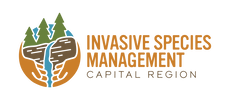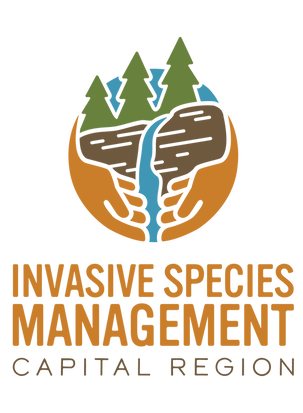Online Education Resources
NY Invasive Species Info page (NYIS.info) - The New York home page for invasive species and PRISM information.
Climate Change and Invasive Species form our sister extension office.
Play Clean Go! - Targets recreationists of all types to get them to clean their gear after they've been out in nature. It includes downloadable signage, graphics, and outreach materials.
Hungry Pests - The USDA invasive pests (insects, diseases). It includes a pest tracker, informational articles, and a list of educator tools with lessons for teachers.
National invasive species information center (NISIC) - The USDA database of species profiles and information.
Attack Pack for Great Lakes Aquatics - The Attack Pack was started by SeaGrant in Wisconsin and have spread through the Great Lakes Basin.
Wisconsin 4-H has free online lesson plans, many which might be adapted to include or focus on invasive species.
Climate Change and Invasive Species form our sister extension office.
Play Clean Go! - Targets recreationists of all types to get them to clean their gear after they've been out in nature. It includes downloadable signage, graphics, and outreach materials.
Hungry Pests - The USDA invasive pests (insects, diseases). It includes a pest tracker, informational articles, and a list of educator tools with lessons for teachers.
National invasive species information center (NISIC) - The USDA database of species profiles and information.
Attack Pack for Great Lakes Aquatics - The Attack Pack was started by SeaGrant in Wisconsin and have spread through the Great Lakes Basin.
Wisconsin 4-H has free online lesson plans, many which might be adapted to include or focus on invasive species.
iMapInvasives
iMapInvasives is a multi-state effort to map invasive species through citizen science. They have a downloadable app that allows users to report potential invasive species. They have a resources tab with lesson plans and help files for new users interested in getting involved. The NY branch of iMapInvasives is a great resource which works closely with the 8 PRISMs to provide data on new and established invasive species across the state. They have NY based educator lessons plans to tie the program into the classroom.
Downloadable resources
"Design Your Own Invasive Species" Lesson Plan - Some notes to walk you through a lesson plan that lets students "design their own" invasive species and explain how and why their created invasive species would be considered invasive.
NYSDEC Conservationist for Kids released an issue all about invasive species, which includes educational information on invasive species of NY, lesson ideas, online resources, and ways to get kids involved. All of the Conservationist for Kids issues are online.
LEAF Anthology Invasive Species Tracking Lesson provides a detailed lesson for incorporating iMapInvasives into an urban classroom.
4H has done a lesson on Purple Loosestrife - what it is, what it does, how to control it, and how students can be involved. It's aimed at high school students but could be adapted to middle school. There's a detailed lesson manual available.
If you're looking for more help integrating Invasive Species into your classroom there are helpful powerpoint slides from a talk at the 2016 STANYS (Science Teachers Association of New York State)
SeaGrant has Aquatic Invasive Species educator information including a material guide available to download.
NYSDEC Conservationist for Kids released an issue all about invasive species, which includes educational information on invasive species of NY, lesson ideas, online resources, and ways to get kids involved. All of the Conservationist for Kids issues are online.
LEAF Anthology Invasive Species Tracking Lesson provides a detailed lesson for incorporating iMapInvasives into an urban classroom.
4H has done a lesson on Purple Loosestrife - what it is, what it does, how to control it, and how students can be involved. It's aimed at high school students but could be adapted to middle school. There's a detailed lesson manual available.
If you're looking for more help integrating Invasive Species into your classroom there are helpful powerpoint slides from a talk at the 2016 STANYS (Science Teachers Association of New York State)
SeaGrant has Aquatic Invasive Species educator information including a material guide available to download.



